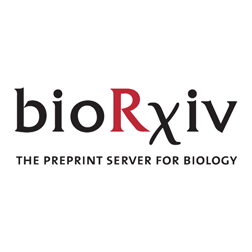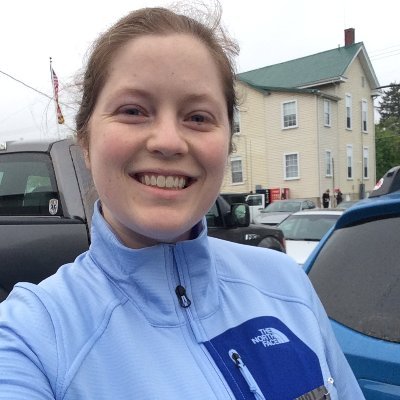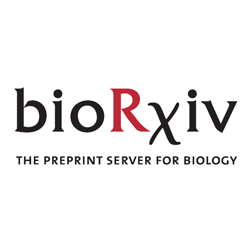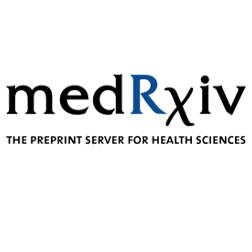
Bohan Ni
@bohan_ni
Followers
159
Following
359
Media
14
Statuses
80
PhD student in JHU Computer science compbio.
Joined February 2020
I very excited to be DEFENDING MY THESIS on February 28, 2025. The seminar will recap empirical tests of large-scale gene regulatory network models and other models that predict transcription. Email or DM for details!
1
3
30
Today, I'm excited to present the second big chunk of my Ph.D. work. We are building a thorough assessment of the burgeoning field of gene expression forecasting. Something is deeply wrong.🧵 - Preprint: https://t.co/UjE6ZaLBCT - Code:
biorxiv.org
Expression forecasting methods use machine learning models to predict how a cell will alter its transcriptome upon perturbation. Such methods are enticing because they promise to answer pressing...
9
105
392
Very excited that my meta-analysis of telomere length GWAS and experimental validation showing that POP5 and KBTBD6 are human telomere length regulation genes is out in @NatureComms! Shout out to my mentors @alexisjbattle and @RasikaMathias
https://t.co/R9UvSVtmxs
nature.com
Nature Communications - Here the authors conduct a multi-ancestry meta-analysis of telomere length, used diverse approaches to identify genes underlying association signals, and experimentally...
2
13
33
We look at QTLs in dozens of differentiating cell types and dynamic trajectories simultaneously in vitro - check out our new preprint and @popp_josh 's thread!
biorxiv.org
Identifying the molecular effects of human genetic variation across cellular contexts is crucial for understanding the mechanisms underlying disease-associated loci, yet many cell-types and develop...
SO excited to share our recent work! To better understand the molecular impacts of human genetic variation, we need models that offer access to MANY more cell types and cell states. Here, we’re using a system called heterogeneous differentiating cultures (HDCs) to do this (1/n)
0
9
43
Happy to share our preprint for ModDotPlot - Rapid and Interactive Visualization of Complex Repeats
biorxiv.org
Motivation A common method for analyzing genomic repeats is to produce a sequence similarity matrix visualized via a dot plot. Innovative approaches such as StainedGlass have improved upon this...
1
22
44
And thank you to all co-authors on the paper for their contributions!
0
0
1
Special thanks to @BennyStrobes, @taibo_li for many discussions of Watershed, and @J__Stock, @RebeccaKeener9 for the numerous advice and editing of this manuscript.
1
0
3
Our work demonstrated the utility of long-read sequencing in rare disease research, and the value of integrative functional rare SV prioritizations using transcriptomic outliers and variant genomic annotations.
1
0
1
Applying the Watershed-SV model trained on GTEx v8 data, we prioritized additional rare disease gene-SVs not detected by other tools in UDN LR data. Among them, we found both of the candidate compound heterozygous deletions in siblings with rare neurodevelopmental disorders.
1
0
1
We then developed Watershed-SV, extending Watershed, to prioritize functional rare SVs with impact on transcriptome, and showed that incorporating transcriptomic outliers in the model significantly improved the performance from the baseline WGS-only model.
1
0
1
Combined with expression outlier calls from UDN, we found outliers are actually enriched for nearby rare INS and TREs. We also found noncoding rare SVs to be enriched nearby outliers, when controlling for impact from coding rare SVs.
1
0
1
To better capture rare TREs, which are outliers in terms of repeat unit expansions, we developed a multi-neighbor distance (MND) algorithm to better capture rare TREs, and found LR can better detect TREs with much longer repeat units.
1
0
1
We found 2.4x rare SV alleles per individual using LR in comparison to SR. We found more rare insertions (INS), and detected long INS previously missing from SR alignment-based SV calling.
1
0
1
With the data, we explored if LR can improve the detection of rare disease SVs & tandem repeat expansions(TREs), analyzed the functional impact of them with transcriptome from blood and fibroblast, and developed Watershed-SV to prioritize rare and disease-relevant SVs and TREs.
1
0
2
We sequenced 68 individuals with Oxford Nanopore long-read (LR) from the Undiagnosed Diseases Network, 57 of which are affected individuals with inconclusive short-read (SR) WES/WGS.
1
0
1
This is an amazing collaborative effort with co-first @jensen_tanner. This happens thanks to UDN @UDNconnect and support from @MatthewTWheeler. I am super grateful for the mentorship from @sbmontgom, @mike_schatz, and @alexisjbattle!
1
0
3
Excited to share our preprint: Integration of transcriptomics and long-read genomics prioritizes structural variants in rare disease. https://t.co/51w8F8qnS8.
medrxiv.org
Rare structural variants (SVs) — insertions, deletions, and complex rearrangements — can cause Mendelian disease, yet they remain difficult to accurately detect and interpret. We sequenced and...
1
26
68
My lab is looking for postdocs! Contact me directly if interested and also consider applying for the Malone Postdoc Fellows Program. Please retweet!
Looking for a postdoc opportunity in computational and engineering applications in medicine and healthcare? Apply to @JHUMCEH and work with mentors in * genomics, AI/data science, robotics, HCI, AR/VR, and more: Deadline coming up: Jan 31, 2024
0
17
27
Looking for a postdoc opportunity in computational and engineering applications in medicine and healthcare? Apply to @JHUMCEH and work with mentors in * genomics, AI/data science, robotics, HCI, AR/VR, and more: Deadline coming up: Jan 31, 2024
malonecenter.jhu.edu
0
14
20










